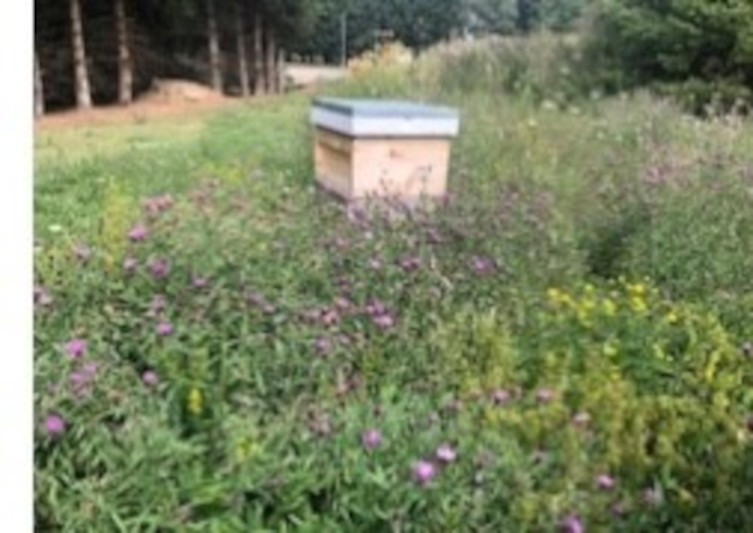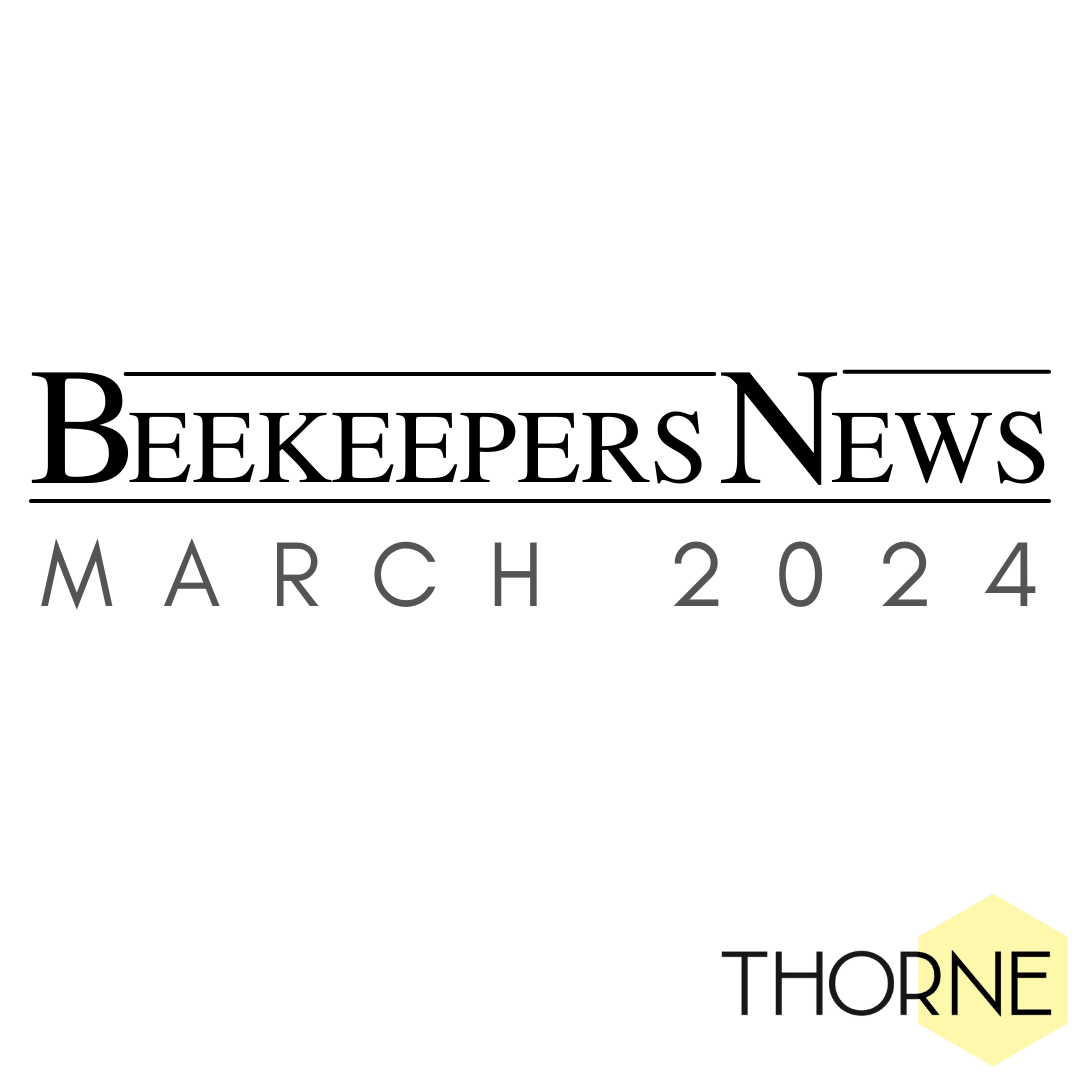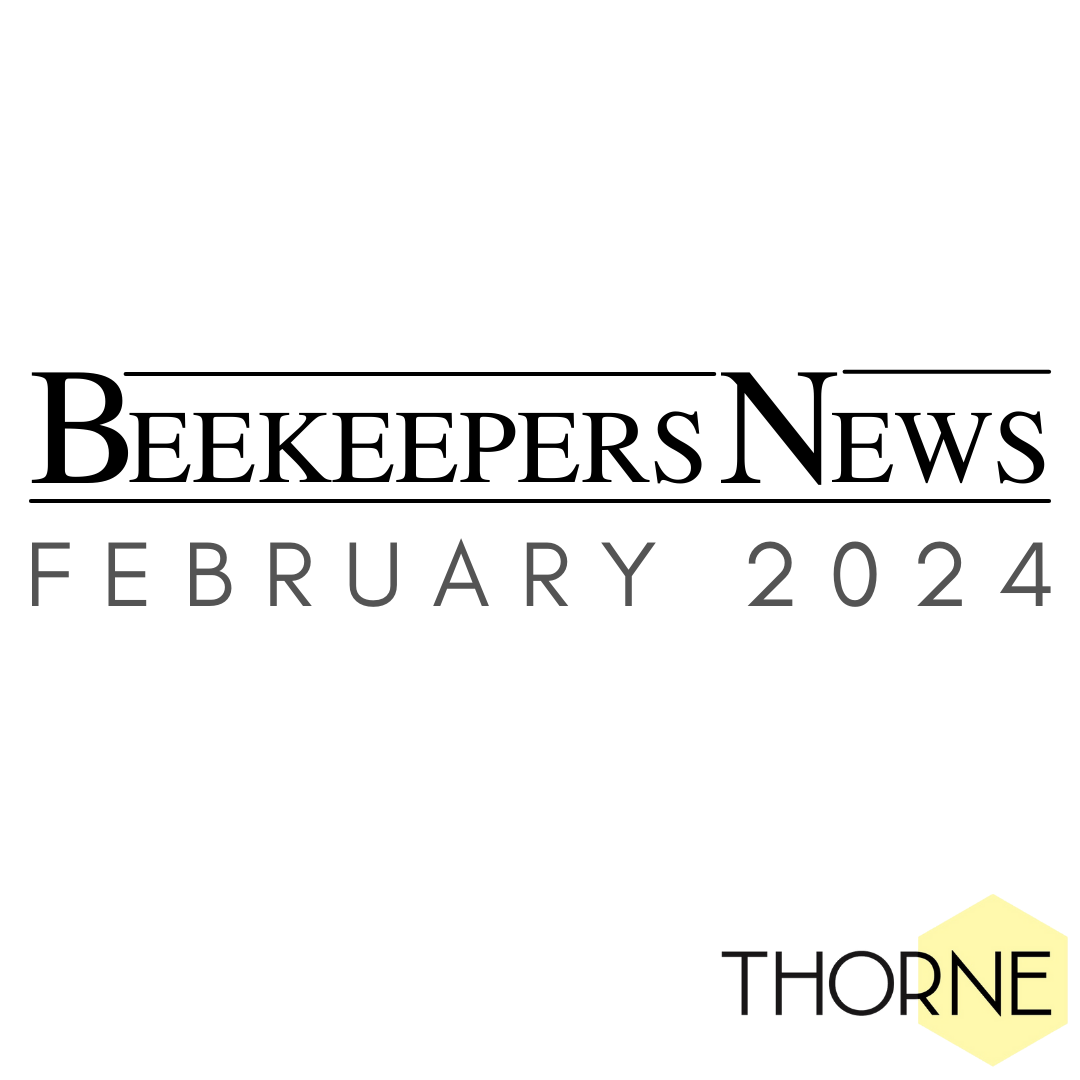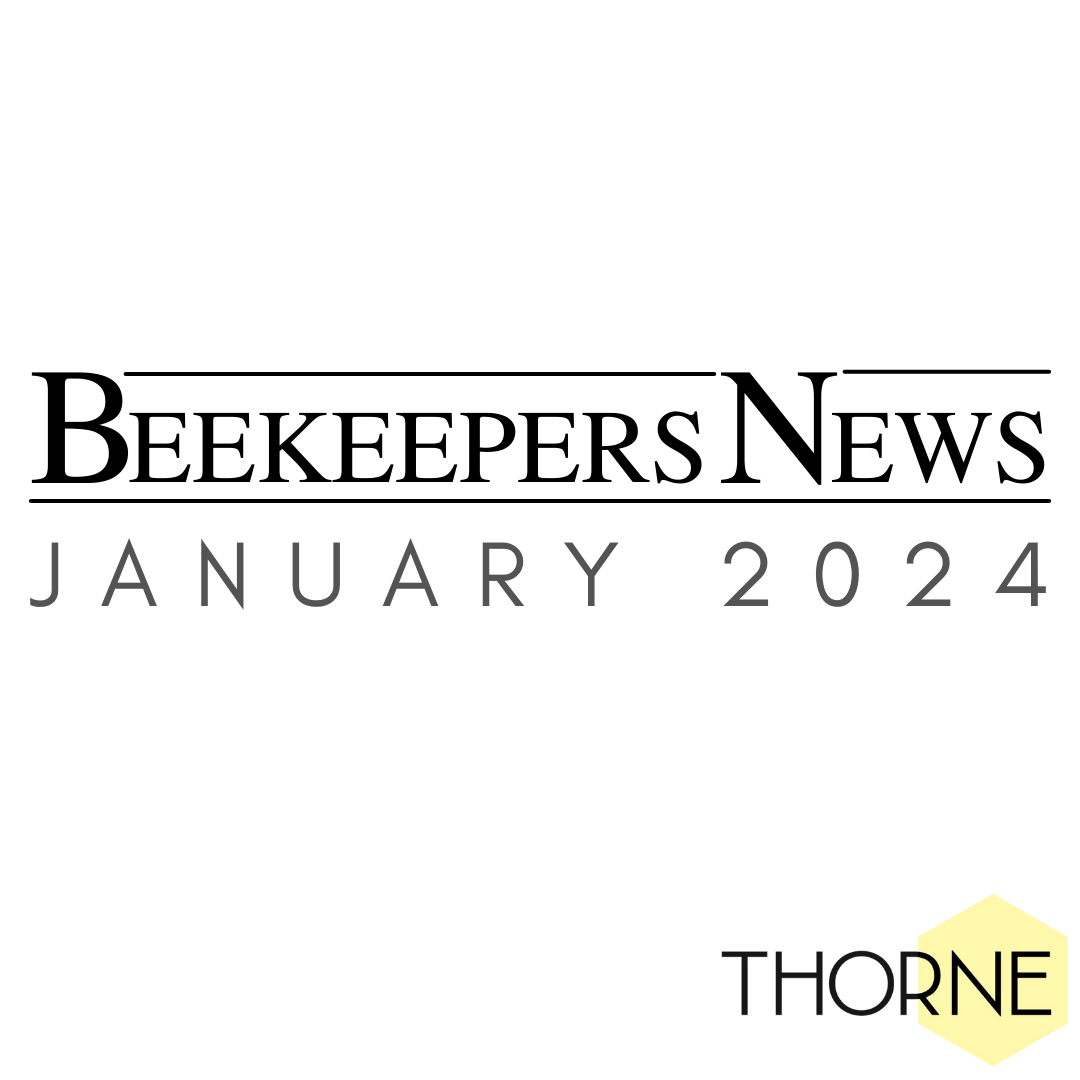August Roundup
This month we have been working incredibly hard to stock up for the online sale. Pallets and pallets of British cedar hive parts, and second quality frames came out of the factory. We were also busy selling medicines for autumn varroa treatment, with MAQS and Apivar being particular popular.
The online sale started very well. As you can imagine the third quality hive parts proved particularly popular and sold out within the first 20 minutes. We still have our second quality hive parts and frames available plus other bargains. See the website for more details. The sale ends at midnight on Monday 14th September.
Ask the Expert
Extraction – a Beginners Guide
Once you have taken the supers off your hives, you will want to get the honey out. Generally, this will involve using an extractor, hence the process is called extraction. (This may differ if for example you have a crop of heather honey, which is thixotropic and will not spin out the frames. This is pressed out the frames and so the process is therefore called ‘pressing’). Depending on how many hives you have and your general set up/equipment etc., the way you deal with this may be different from your beekeeping friends. For the purposes of this article, I will outline the main characteristics, aimed at smaller scale beekeepers.
Equipment you will need:
- Super/s full of honey ready to extract
- Uncapping tray
- Uncapping knife or fork
- Extractor – this can be manual or electric. Electric is more expensive but takes the work out of spinning the handle
- Honey buckets including a settling tank
- Filters – our stainless-steel double strainer is fantastic
Extraction can be a horribly messy job so the aim of the game is to make the process as simple as possible and make sure it flows from one process to the next so you don’t have to lift too much or get everything stuck up with honey.
The first job is to uncap the frames. This basically means you have to take the wax off the super frames to expose the honey underneath so it can be spun out in the extractor. For uncapping, you will need an uncapping tray and an uncapping knife (or fork). Hold the frame over the uncapping tray and use the knife to cut the wax off, using the edges of the frame as guides. Depending on the thickness of the comb, you may cut a lot of the honey off too. This is why you use an uncapping tray – it catches all the wax and honey you cut off from the frame so you don’t waste anything. The wax will separate from the honey and you can then collect the honey in a bucket to go with the rest, once it has been extracted. Cutting the wax off takes a little bit of getting used to, but once practised, you should end up with a good slice of wax and honey being cut off, leaving both sides of the frame nice and flat.
Once you have uncapped your frame, it is ready to go into the extractor. Repeat the uncapping process for as many frames as you have space for in the extractor. Once full, you need to spin the honey out. If you have a tangential extractor (frames spin at a tangent to the circular extractor), you will need to spin the frames one way, then remove them and spin them the other way, and then back the other way. This can be a bit of a faff but it does get the frames really clear of honey. In a radial extractor (where the frames are positioned like the spokes of a bicycle wheel), you just need to spin one way and then the other, no need to take the frames out. You need to spin the frames faster than you think - with the electric extractors it looks almost like a washing machine speed! This is hard to achieve using a manual one, but you just have to do your best.
Watch the honey fly out onto the sides of the extractor…once you are satisfied you have as much honey as you can get out of the frames, you need to remove them and pop them back in the super. They should now be quite a lot lighter than when they went into the extractor. Repeat until all the frames have been extracted.
The honey can then be tapped off from the extractor and from the uncapping tray into a settling tank with valve and left to settle. After a day or so, you can start jarring your hard-earned honey, not forgetting to stick your personalised labels on to adhere to labelling regulations. The ‘scum’ that settles on top of the honey looks unsightly but is really just air bubbles. You may want to save the last dregs of honey for yourself if you are planning to sell it because paying customers tend not to like the look of the bubbles on top, no matter how much you tell them it’s air! Besides, it is a nice excuse to sample some of your own season’s produce.
Beekeeping Blog
August 2020
This month has been a month of finishing off some of the jobs for the year and getting the bees settled for the winter. It may seem a long way off but there are always jobs to be doing and preparation is key with beekeeping!
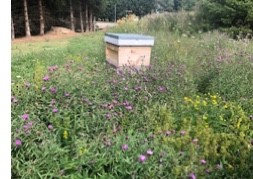
We have seen the last of the summer wildflowers at our main apiary. The bees are situated right on the edge of these wildflowers and so there is literally a hive of activity when the flowers are in full bloom. Here you can see one of the hives surrounded by flowers coming to their end. Luckily we have a gardener who comes and strims around the hives, not just so that we can get to them, but also so that the bees can find their way in and out as the flowers do get quite tall! As the end of the flowers has come, we have had to feed the bees. This just gives them that extra boost as we start to prepare them for settling down for winter.
Inevitably, and as suspected, there are lots of wasps about at the minute and have been for some time. Wasps are still an important pollinator so without wanting to decimate their populations, one way we have managed to keep them from destroying our honey bee colonies is to reduce the entrances down to one bee space. Perhaps the best way to keep wasp numbers down without having to intervene is to keep strong colonies. This is easier said than done, but they do tend to go for weaker colonies where they can enter freely, consume the stores and leave the bees to starve. Stronger colonies tend to defend the hive better, although we do find that during wasp season, the bees are generally more aggressive – probably due to having to be on guard and defend their hive more vigorously.
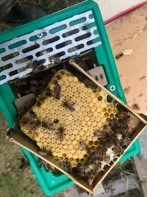
The last of our queens have been installed into hives to overwinter this month. You can see from this picture that we used the rainbow mating nucs to rear and house queens for a short while, as much as a back up as for anything else. By doing this, we have been able to replace any failing queens with young, prolific ones which will hopefully mean they go into winter well and emerge in spring a nice strong colony. If you look closely, you may just be able to see the queen on this frame of brood. Finally, outside of our own beekeeping, we have re-established the Asian Hornet traps and set them out as per the instructions around the apiaries. These are a monitoring trap for the non-native Asian Hornet which has made several appearances in the UK over the last few years but which has not yet quite taken hold. Autumn is the time it is most likely to be found in this country so we are doing our bit as beekeepers to try and help eradicate this pest from our apiaries.
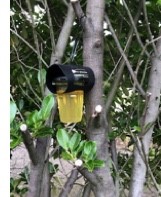
Bees for Development Update
Following the success of Bees for Development Ghana's work with cashew growers - helping them raise crop yields by up to 50% - we are taking a similar approach with growers of oranges and other fruits. Citrus growers have lost their market with the closure of a regional fruit processing plant, so we have begun beekeeping training with 20 people, representing 100 citrus growers from communities in the area, taking them on a supported journey towards reliable income.
We are delighted that our President HRH The Duchess of Cornwall is donating all proceeds from her honey sales this year to support our work. We are hoping that other beekeepers may follow her wonderful example!
Bees for Development can offer talks to beekeeping groups via Zoom. There is no fee for including them in your talks programme but a donation to the charity is encouraged.
The Bees for Development shop in Monmouth, South Wales is open again. The team would welcome your visit, but if you can't make it, many products are available online at shop.beesfd.org
National Honey Show
For this year’s National Honey Show we will be hosting a professional, online conference – the first event of its kind in the UK beekeeping world!
Everyone is welcome to attend the event, free of charge. Registration will go live in early October.
Attendees will be able to attend lectures, demonstrations, visit our trade hall and take part in other exciting activities. Planning for the virtual conference is evolving so visit our website and Facebook page for more news as we add content to the show over the coming weeks.
The show will feature a series of lectures and demonstrations, followed by live online Q&A sessions, with the opportunity to ask questions via the ‘chat’ facility.
Evening events will be hosted on Thursday by The Central Association of Bee-Keepers, with a live lecture by Medhat Nasr from the Canadian Prairies; and on Friday, Bees for Development welcome you to their live online Quiz evening.
Trade Hall. All your favourite traders will be represented in the Trade Hall, where you will be able to keep in touch with their latest offerings.
We know the lack of a physical Show will be disappointing, as it is for us all, but we hope to offer an exciting armchair event, where the National Honey Show Community can come together online.
22nd to 24th October 2020 http://www.honeyshow.co.uk


